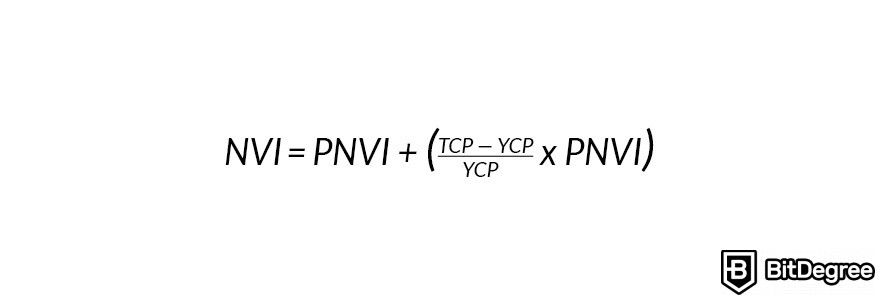What is Negative Volume Index (NVI)?
Stop overpaying - start transferring money with Ogvio. Sign up, invite friends & grab Rewards now! 🎁
Let's find out Negative Volume Index (NVI) meaning, definition in crypto, what is Negative Volume Index (NVI), and all other detailed facts.
The Negative Volume Index (NVI) is a technical indicator used to track price movement during periods when the trading volume had decreased from a particular point. NVI was created by Paul Dysart in the 1930s, making it one of the oldest financial indicators.
The general principle of the NVI is that a rising trend can continue even if there is a notable decline in trading volume. Uninformative traders take the blame for the exorbitant trading volumes, while informed traders play a role during low trading volume days.
NVI is used to indicate what the general mindset of smart money is. Investments made by large-scale investors that are associated with significant asset price movements in the financial markets are referred to as smart money.
Professional traders are more likely to trade while smart money is not active. This reduces the level of volatility, and maintains a low asset volume. Such trading conditions allow for opportunities to accumulate assets.
Positive Volume Index (PVI)
Traders can use the Positive Volume Index (PVI) alongside NVI to measure the increase in volume at specific periods of time. The increase of PVI tends to indicate a bearish market, while NVI signals a more bullish sentiment.
The trend reversals are established by analyzing the 255-period moving average. If the NVI is above the moving average, it points towards a bull market and sends out a buy signal. On the other hand, if the NVI falls below the moving average, it signals a bearish market and suggests a sell signal.
While the default value for the moving average of an NVI indicated is set to 255, traders can adjust it according to their requirements when making trade decisions.
Negative Volume Index (NVI) Formula
The Negative Volume Index is calculated by comparing the trade volume of one day with the volume of the previous day. An NVI will only indicate a change if the volume has decreased within the time frame of the two days. If the volume of one day exceeds the volume of the previous day, the NVI will not show a significant change.
The higher value of an NVI shows a low trading volume and an increase in the asset price. If the value of an NVI is lower, it points towards a price decrease due to the low amount of investors trading the asset.
The Negative Volume Index (NVI) formula is:

Here, PNVI = Previous NVI; TCP = Today’s closing price; YCP = Yesterday’s closing price.
It is recommended to use the Negative Volume Index alongside other technical indicators, such as the Aroon indicator, the Klinger oscillator, Moving Average Convergence Divergence (MACD), and the Relative Strength Index (RSI). Using several indicators helps make more accurate and well-informed trading decisions.









